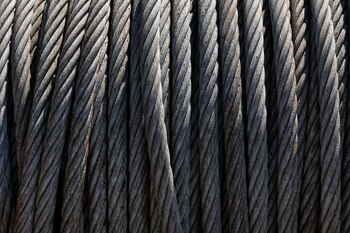
Wire rope slings are versatile and indispensable tools in various industries, from construction and maritime to manufacturing and mining. They provide an efficient and safe means of lifting and securing heavy loads. However, not all wire rope slings are the same, and understanding the different types available is crucial for ensuring safety and optimizing performance in various applications. In this detailed tutorial, we’ll delve into the world of wire rope sling types, covering their construction, use, and factors to consider when choosing the best sling for your unique needs.
Understanding Wire Rope Slings
Before delving into the various types of wire rope slings, it’s essential to grasp the basics of their construction and components. A typical wire rope sling consists of:
Wire Rope
Wire ropes, the main component, are composed of many strands of wire twisted together. These strands can be made from various materials, such as steel or stainless steel, and come in various configurations, including 6×19, 6×36, or 7×19, each suited for specific applications.
 Wire Rope End Terminations
Wire Rope End Terminations
These are the fittings or attachments at the ends of the wire rope that connect the sling to the load or lifting equipment. Common terminations include thimbles, sleeves, and hooks.
Sling Configurations
Wire rope slings can be configured in different ways, such as single-leg slings, multiple-leg slings, or basket slings, depending on the lifting requirements.
Load-Bearing Capacity
Wire rope slings are rated based on their safe working load (SWL), which is the maximum weight they can lift safely under optimal conditions.
Types of Wire Rope Slings
Now, let’s explore the various types of wire rope slings and their specific applications:
- Single-Leg Slings:
- Single-Part Slings: These are the most basic type of wire rope slings, consisting of a single length of wire rope with an end termination. They are ideal for simple vertical lifting and are easy to handle.
- Eye and Eye Slings: These slings have loops or eyes formed at both ends, making them versatile for various lifting scenarios. They can be used in vertical, choker, or basket hitches.
- Multiple-Leg Slings:
- Two-Leg Bridle Slings: These slings feature two legs attached to a single master link or hook. They are suitable for handling unbalanced loads and are commonly used in crane operations.
- Three-Leg Bridle Slings: Similar to two-leg bridles, these slings have three legs, offering even more stability and load distribution for complex lifting tasks.
- Four-Leg Bridle Slings: Designed for extremely heavy loads, these slings distribute the weight among four legs, enhancing load stability and safety.
- Basket Slings:
- Single-Part Basket Slings: These slings consist of a single length of wire rope formed into a continuous loop, creating a “basket” configuration. They are ideal for lifting cylindrical loads and other objects with a consistent shape.
- Multiple-Part Basket Slings: These slings involve multiple wire ropes assembled to form a basket configuration. They are suitable for lifting larger, irregularly shaped loads.
- Specialty Slings:
- Grommet Slings: Grommet slings are designed for lifting objects with fragile or delicate surfaces. They have a protective layer, such as nylon or rubber, that prevents damage to the load.
- Rotation-Resistant Slings: These slings are constructed to minimize the twisting and spinning of loads during lifting, making them suitable for critical or precision applications.
Selecting the Right Wire Rope Sling
Choosing the appropriate wire rope sling for your application is essential for safety and efficiency. Here are some factors to consider:
Load Characteristics
Analyze the size, shape, and weight of the load. Determine if it’s a regular or irregular shape and if it requires multiple attachment points.
Lifting Configuration
Consider the type of hitch you will use—vertical, choker, or basket—and select a sling configuration that suits your needs.
Environmental Conditions
Assess the environment in which the sling will be used. Consider factors like temperature, exposure to corrosive substances, and the presence of sharp edges that could damage the sling.
SWL and Sling Material
Ensure that the selected sling has a safe working load (SWL) that exceeds the weight of the load you intend to lift. Also, choose a wire rope material suitable for the application, such as stainless steel for corrosion resistance.
Lifting Equipment Compatibility
Ensure that the end terminations of the wire rope sling are compatible with your lifting equipment, such as hooks, shackles, or crane attachments.
Safety Standards
Comply with industry and safety regulations when selecting and using wire rope slings. It’s crucial to follow the manufacturer’s guidelines and conduct regular inspections.
Safety Considerations for Wire Rope Slings
Safety is paramount when using wire rope slings in lifting operations. Here are some important safety tips to keep in mind:
Regular Inspection
Inspect wire rope slings before each use for signs of wear, damage, or deformation. Remove any damaged slings from service immediately.
Proper Storage
Store wire rope slings in a clean, dry area away from direct sunlight and corrosive substances. Keep them off the ground and away from sharp objects.
 Avoid Overloading
Avoid Overloading
Never exceed the safe working load (SWL) of a wire rope sling. Calculate the load weight accurately before lifting.
Use Appropriate Attachments
Ensure that the end terminations and attachments used with the sling are compatible and properly secured.
Load Handling
Be cautious when handling loads to prevent sudden movements, swinging, or shifting. Maintain a clear path when moving loads.
Training and Certification
Ensure operators and riggers are appropriately educated and certified for lifting activities requiring wire rope slings.
Conclusion
Wire rope slings are essential tools for various lifting and rigging applications across multiple industries. Understanding the different types of wire rope slings and selecting the right one for your needs is crucial for safety and efficiency. By considering factors such as load characteristics, environmental conditions, and safety standards, you can ensure that your wire rope sling serves as a reliable and safe lifting solution in your operations. Always prioritize safety, conduct regular inspections, and adhere to industry guidelines to make the most of your wire rope slings and keep your lifting operations incident-free.

Leave a Reply